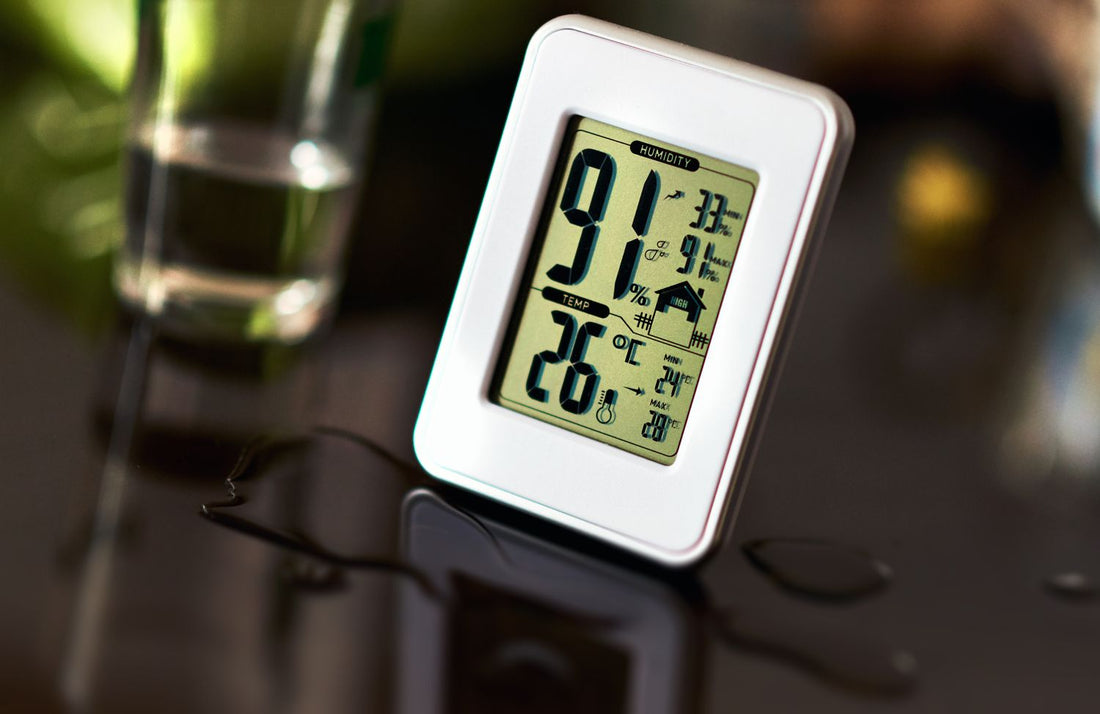Maintaining indoor comfort involves more than just controlling temperature. Humidity levels play a crucial role in determining the comfort of your living or working environment. This is where a humidistat comes in.
A humidistat is a device that monitors and regulates humidity in a space. Compared to a thermostat regulating temperature, a humidistat ensures the air is neither too dry nor too moist. Understanding how it works can help you make informed indoor air quality and comfort decisions.
What Does a Humidistat Do?
Monitoring Humidity
A humidistat is a sensor that continuously tracks the moisture level in the air. It detects changes in relative humidity and sends signals to either a humidifier or a dehumidifier to adjust the environment accordingly.
Most residential humidistats are part of a whole-house system. They connect with HVAC systems or standalone humidifiers to maintain an ideal humidity range, often between 30 and 50 percent.
Regulating Equipment
When the humidity drops below a set point, the humidistat activates a humidifier to add moisture to the air. If the level exceeds the desired threshold, a dehumidifier may be turned on to reduce excess moisture. Some humidistats can control both systems, depending on the equipment installed.
This automatic regulation protects your home and health from the negative effects of imbalanced humidity.
Why Humidity Control Is Essential
Health Benefits
Proper humidity levels help reduce the spread of airborne viruses and ease respiratory conditions like asthma and allergies. Dry air can irritate nasal passages and skin, while too much humidity encourages mold growth and dust mites.
Home Preservation
Excess moisture can damage wood flooring, furniture, paint, and insulation. On the other hand, overly dry conditions can cause wood to crack and static electricity to increase. A humidistat helps prevent these issues by keeping humidity in a safe range.
Energy Efficiency
When humidity is managed well, you feel more comfortable at lower temperatures in winter and higher temperatures in summer. This reduces the strain on your HVAC system and can lower energy bills.
Types of Humidistats
Manual models require you to set the desired humidity level. Once set, the device maintains that level by turning humidifiers or dehumidifiers on and off. These are common in residential systems and are often installed near the HVAC thermostat or on the equipment.
Manual Humidistats
Automatic humidistats adjust humidity settings based on changes in indoor or outdoor temperatures. These models are more advanced and user-friendly. Some are programmable or have sensors that adapt the settings without manual input.
Automatic Humidistats
Automatic humidistats adjust humidity settings based on changes in indoor or outdoor temperatures. These models are more advanced and user-friendly. Some are programmable or have sensors that adapt the settings without manual input.
Digital Humidistats
Digital units offer precise readings and modern features. Many come with digital displays and compatibility with smart home systems. They can be integrated with Wi-Fi and offer remote access through mobile apps.
Where Humidistats Are Used
Residential Applications
In homes, humidistats are typically installed in HVAC systems, whole-house humidifiers, or wall-mounted units. They are especially useful in areas with extreme seasonal humidity changes.
Commercial and Industrial Spaces
In commercial settings, humidistats are used in data centers, greenhouses, storage rooms, and production areas where specific humidity levels must be maintained to protect materials and equipment.
Standalone Devices
Some portable humidifiers and dehumidifiers come with built-in humidistats. These allow the unit to operate automatically based on current humidity readings. While less precise than integrated systems, they offer convenience for single-room use.
Humidistat vs Thermostat: Understanding the Difference
Although they seem similar, a humidistat and a thermostat serve distinct functions.
-
A thermostat measures and controls temperature
-
A humidistat measures and controls humidity
Both may work together in a smart HVAC system, but each has its specific role. For example, a thermostat may call for heat in colder months while the humidistat signals the humidifier to add moisture to the dry air.
Signs You May Need a Humidistat
You might benefit from installing a humidistat if you notice any of the following:
-
Frequent condensation on windows or walls
-
Musty smells or mold growth
-
Cracked wood floors or furniture
-
Static shocks or dry skin, and sinuses
By managing these issues with the help of a humidistat, you can improve comfort and preserve your indoor environment.
Maintenance and Calibration
Like any sensor, a humidistat should be kept clean and occasionally checked for accuracy. Dust and debris can affect readings. Calibrating the device once a year ensures it maintains proper function.
Finding the Best Humidistats at Voomi Supply
To improve indoor comfort, explore high-quality humidistats available at Voomi Supply.
Voomi Supply offers a range of reliable options suitable for residential, commercial, and industrial needs. Their collection includes manual and digital models from trusted brands, designed for easy integration with HVAC and standalone systems.
Whether upgrading an existing system or installing a new one, Voomi Supply provides the tools to take control of your indoor environment with confidence.


